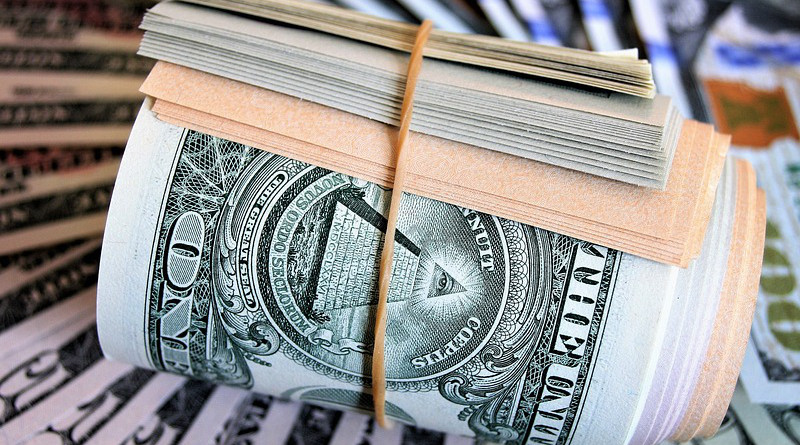The Greenback’s Reign Is Secure For Now – Analysis
Recent US Dollar weakening against other developed market and emerging market currencies coupled with announced plan of BRICS economies to create a new global currency have fueled concerns about the decline of the greenback as the pre-eminent global currency. All the while there are ominous signs of the weakening of the petrodollar: Saudi Arabia’s souring ties with Washington yet closer ties with Beijing and utilization of the Renminbi to settle deals between Chinese and European energy companies. Can this be the beginning of the end for King Dollar?
Indeed, the US Dollar based system had lead to persistent global imbalances in balance of payments. For the United States, the system requires the US to run very large current account deficits to supply the world with enough US Dollars to allow for adjustment for balance of payments. This incentivizes the financial sector to grow rapidly compared to the real sector, contributing to higher inequality, and hampering economic growth. More importantly, the decisions The Federal Reserve take to protect the US economy may have the opposite effect on the global economy, as seen in the Fed’s recent rate hiking campaign.
Meanwhile for the rest of the world, the current USD dominated system leaves countries with naturally occurring current account deficits e.g Indonesia at the mercy of international capital flows, which may at times be very volatile. Some countries try to circumvent this problem by becoming current account surplus countries by repressing domestic consumption, accumulating reserves, and growing an export-oriented strategy such as Singapore, Japan and China.
However, a shift away from the US Dollar is still highly unlikely in the current global environment. First of all, the current trend of USD weakening reflects the market belief of a soft landing for the US economy and therefore a lower policy rate. Other alternative currencies are likely to maintain higher policy rates due to higher inflation. Therefore, it is likely to be a market driven weakening and not a global structural problem.
Second, the US Dollar still has the best fundamentals compared to any other alternative currency during the ongoing global energy crisis. The Yen and Euro are likely to be weighed down by higher energy prices. Meanwhile the US remains relatively energy independent, thanks to its production of shale oil and offshore fields. Increased energy prices, mostly denominated in US Dollars, have also led to higher demand for the currency, cementing its relatively stable value.
Thirdly, there is no viable alternative to the deep market for US treasuries, totaling $ 24 trillion in the hands of investors. The second and third largest, Japan and China remain dominated by domestic investors. The highly liquid US treasury market creates an efficient financial system which creates a risk-free benchmark of the global financial system, dictating funding costs for everything from commercial loans to credit cards. The current debt ceiling crisis in the US and subsequent rush for short term US government papers highlight the scale of the demand for US treasuries.
Fourth, confidence and trust of global investors in The Federal Reserve has remained strong, shown by the immediate and volatile reaction of financial markets to each Fed policy. The Fed has made mistakes in the past, such as its argument that the initial inflation spike after Covid-19 was transitory. But currently the Fed is trying its best to convince markets that it is bent on its mission to reduce inflation. In comparison, the People’s Bank of China and the Bank of Japan has often confused investors with several policy flip flops.
Fifth, and probably the weirdest reason the US Dollar is likely to remain king is that the BRICS countries are among the largest beneficiaries of the system. Commodity exporting countries such as Russia, Brazil and South Africa accumulate current account surpluses and buy imports and US assets. For some other currency to do the same, for example, the Chinese Renminbi, it would have to unlock its capital account to supply the globe with Renminbi for transaction needs. This would involve a significant appreciation of the Renminbi due to high global demand. However, this would in turn undermine Chinese exports, the main engine of the Chinese economy.
Nevertheless, it is likely the US Dollar’s dominance will somewhat fade in the future as the need for a global rebalancing of trade imbalances becomes increasingly urgent amid high global debt levels and tighter monetary policy. However, this is likely to be undermined by weak global cooperation in monetary and fiscal policy and increasing opacity of international capital flows due to growing political and economic fragmentation. A notable example is declining Chinese holdings of US treasuries but coupled with rising holdings of US agency papers or via offshore tax havens.
The rise of emerging economies in global geopolitics has led to normalization of local currency settlements and bilateral swaps as the replacement for IMF-conditionality bounded international organizations. Indonesia alone has bilateral swaps and local currency settlement agreements with most major economies in the Asia Pacific. As a nod to the USD’s importance, Indonesia’s swap deal with Singapore and Japan would also provide it with billions of US Dollars apart from local currencies.
The proliferation of regionalization is also likely to give rise to dominant regional currencies, deemed to be a sufficiently stable store of value accompanied with relatively open capital accounts. In the Southeast Asian region, the Singapore Dollar, and Thai Baht likely to fit this description, as both economies are highly regarded in the region and both economies maintain open capital accounts and relatively efficient banking systems.
Suryaputra Wijaksana is an Economist at Bank Rakyat Indonesia, the largest state owned bank in Indonesia.

